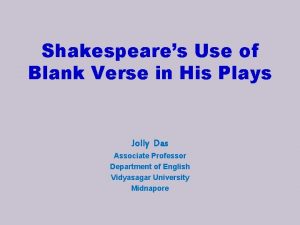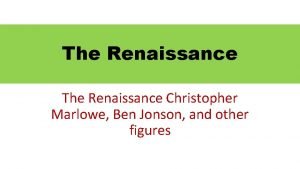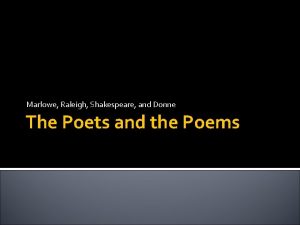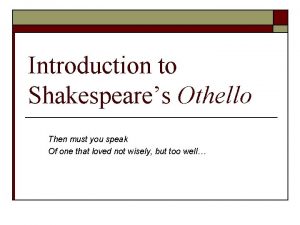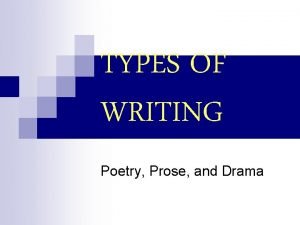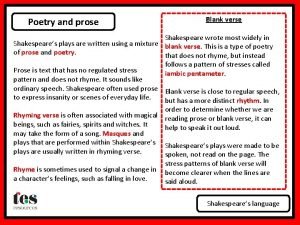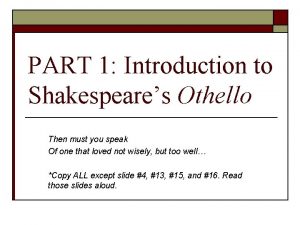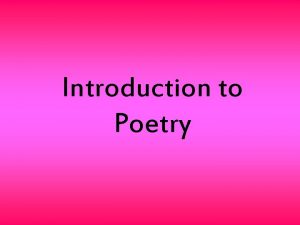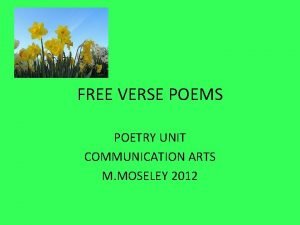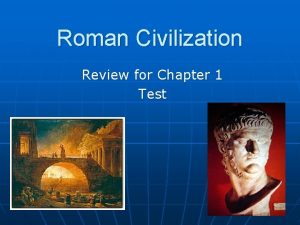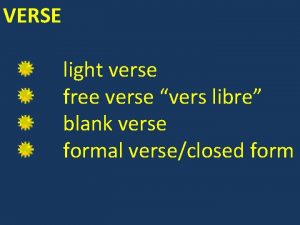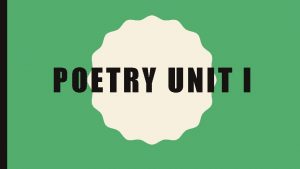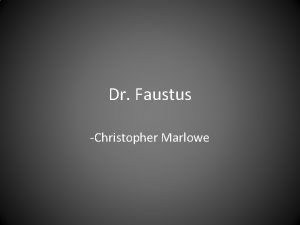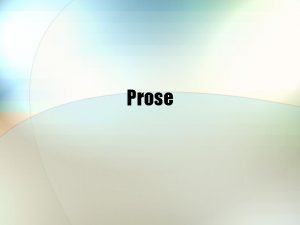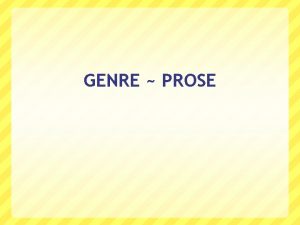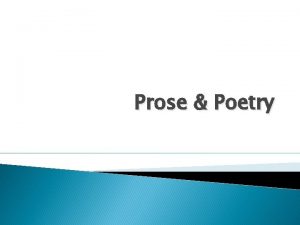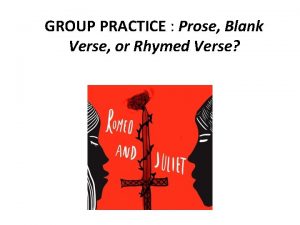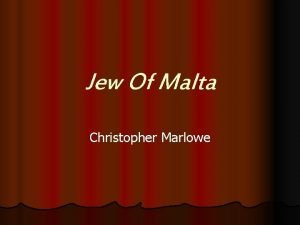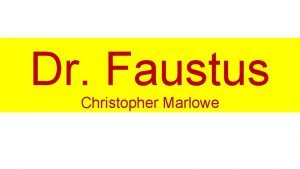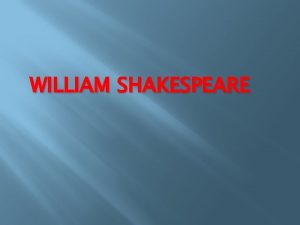Marlowe and Shakespeare Verse and Prose Do you












- Slides: 12

Marlowe and Shakespeare Verse and Prose

Do you speak verse or prose? • http: //www. youtube. com/watch? v=U 2 V 8 cc. C NQIg • 4 min

Prose • Prose refers to ordinary speech with no regular pattern of accentual rhythm. • used whenever verse would seem bizarre – Ex. Madness in Macbeth – Low comedy – Serious letters (Lady Macbeth) – When characters are cynical, rational, sharing common sense or very irrational. – Relaxed conversation

Meter: • a recognizable rhythm in a line of verse consisting of a pattern of regularly recurring stressed and unstressed syllables. • Foot/feet – a metric "foot" refers to the combination of a strong stress and the associated weak stress (or stresses) that make up the recurrent metric unit of a line of verse.

Iambic Pentameter • a particular type of metric "foot" consisting of two syllables, an unstressed syllable followed by a stressed syllable ("da DUM"); the opposite of a "troche. " • U/U/U/ • "The course of true love never did run true" (MND I. i. 134). • da DUM da DUM • the COURSE of TRUE love NEver DID run TRUE).

Troche • the opposite of an iamb • a stressed syllable followed by an unstressed syllable ("DA dum"). /U • "Double, double, toil and trouble; / Fire burn and caldron bubble" (MAC IV. i. 10 -11). • DA dum • DOUble TOIL and TROUble).

Verse • poetry: literature in metrical form – Rhyming verse – Blank verse

Rhyming Verse • usually in rhymed couplets – two successive lines of verse of which the final words rhyme with another – Pattern is usually aa bb cc etc • • Helena's lament in A Midsummer Night's Dream (I. i. 234 -9): Love looks not with the eyes, but with the mind; ("a" rhyme) And therefore is winged Cupid painted blind. ("a" rhyme) Nor hath Love's mind of any judgment taste; ("b" rhyme) Wings, and no eyes, figure unheedy haste: ("b" rhyme) And therefore is Love said to be a child, ("c" rhyme) Because in choice he is so oft beguiled. ("c" rhyme)

RHYME • often used for ritualistic or choral effects and for highly lyrical or sententious passages that give advice or point to a moral – Witches in Macbeth

Blank Verse • Unrhymed iambic pentameter • iambic pentameter consists of ten syllables alternating unstressed and stressed syllables • some irregularities, such an occasional troche mixed in with the iambs or an extra unstressed syllable at the end of a line

The Tragicall History of the Life and Death of Doctor Faustus • Performed around 1592 • First published 1604 (quarto, A text) • Published again 1616 (quarto, B text)

Christopher Marlowe • baptized 26 February 1564– 30 May 1593 • (Shakespeare, baptized 26 April 1564; died 23 April 1616)

